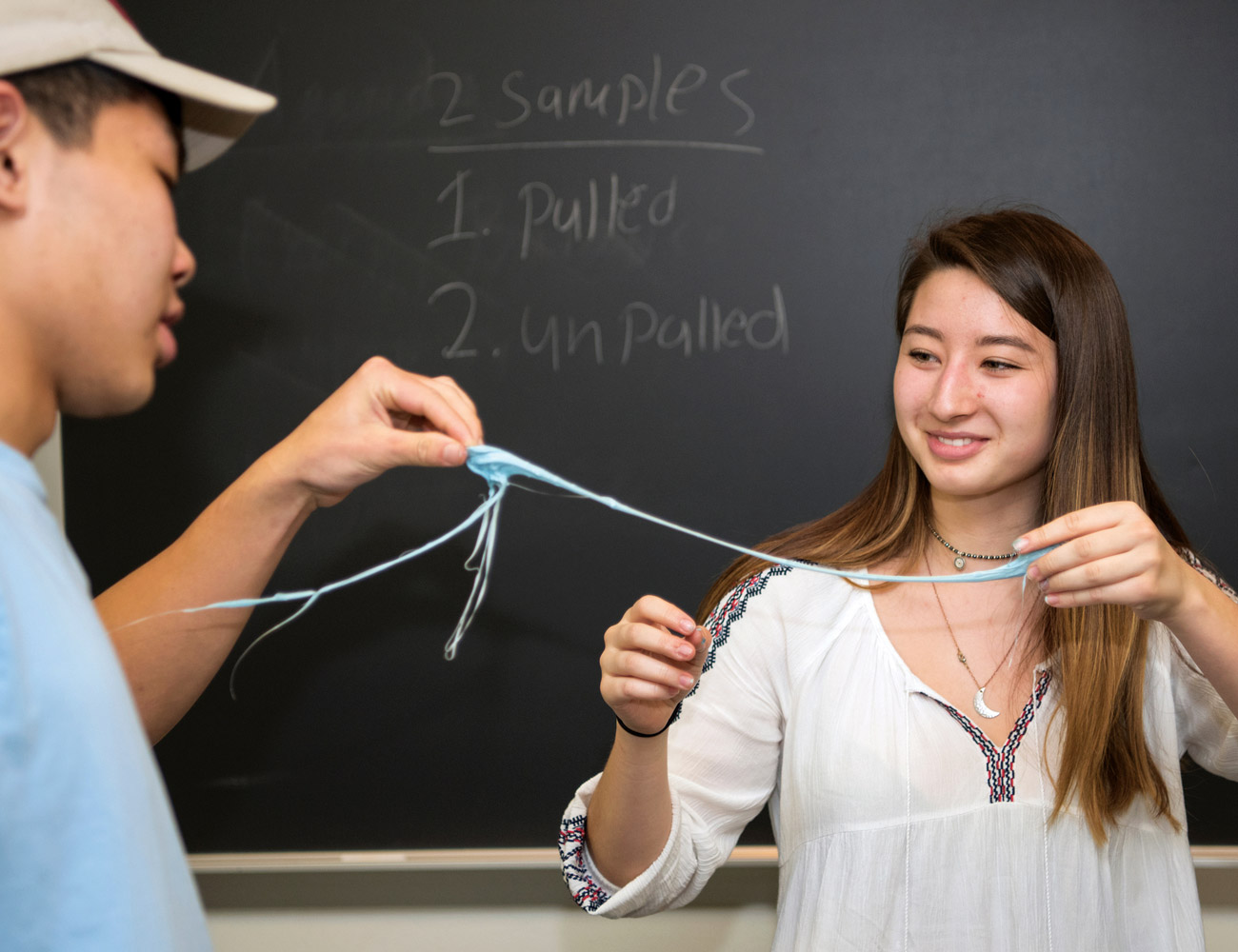
Photo: Emily Paine

On Valentine’s Day, Ryan Wang ’19 (left) and Fern Morrison ’19 whipped up some candy as a class exercise.


What’s Cookin’
What Class?
Special Topics in Chemical Engineering: Applied Food Science in Engineering
Who Teaches It?
Professor Margot Vigeant, chemical engineering
“Rather than lecturing, I like to present students with problems, then ask them to find solutions. For instance, I’ve told students, ‘There is a drought, and the price of tomatoes has just doubled. Your company makes a quality tomato sauce, and you can’t raise the price of your sauce more than 20 percent without negatively affecting your customer base. What are you going to do?’ The first step for students is to do an initial report — in this case, they make tomato sauce and document the process. Most have never done it before or if they have, they have not taken notes on the process.
“I’LL HEAD TO THE GROCERY STORE TO PICK UP TOMATO JUICE, corn starch, xanthan gum and corn syrup so the students can experiment and report out on the results. Corn syrup was a disaster! At least one group of students came to the same conclusion seen in industry: Bulk up the sauce with less expensive vegetables, such as onions, peppers or carrots.”
Photo: Emily Paine

On Valentine’s Day, Ryan Wang ’19 (left) and Fern Morrison ’19 whipped up some candy as a class exercise.
What’s Cookin’
What Class?
Special Topics in Chemical Engineering: Applied Food Science in Engineering
Who Teaches It?
Professor Margot Vigeant, chemical engineering
“Rather than lecturing, I like to present students with problems, then ask them to find solutions. For instance, I’ve told students, ‘There is a drought, and the price of tomatoes has just doubled. Your company makes a quality tomato sauce, and you can’t raise the price of your sauce more than 20 percent without negatively affecting your customer base. What are you going to do?’ The first step for students is to do an initial report — in this case, they make tomato sauce and document the process. Most have never done it before or if they have, they have not taken notes on the process.
“I’LL HEAD TO THE GROCERY STORE TO PICK UP TOMATO JUICE, corn starch, xanthan gum and corn syrup so the students can experiment and report out on the results. Corn syrup was a disaster! At least one group of students came to the same conclusion seen in industry: Bulk up the sauce with less expensive vegetables, such as onions, peppers or carrots.”
